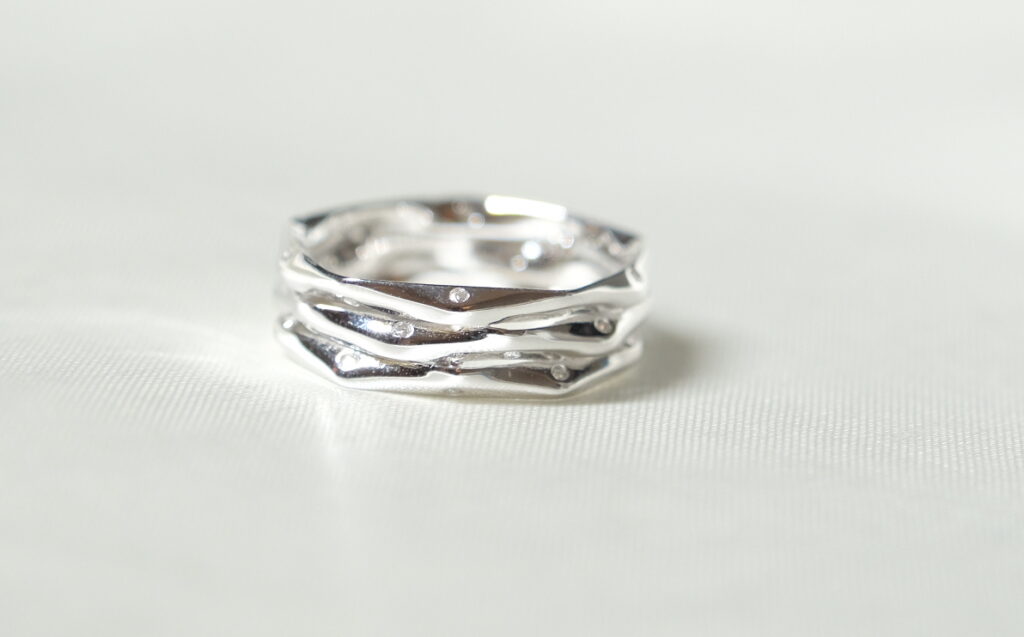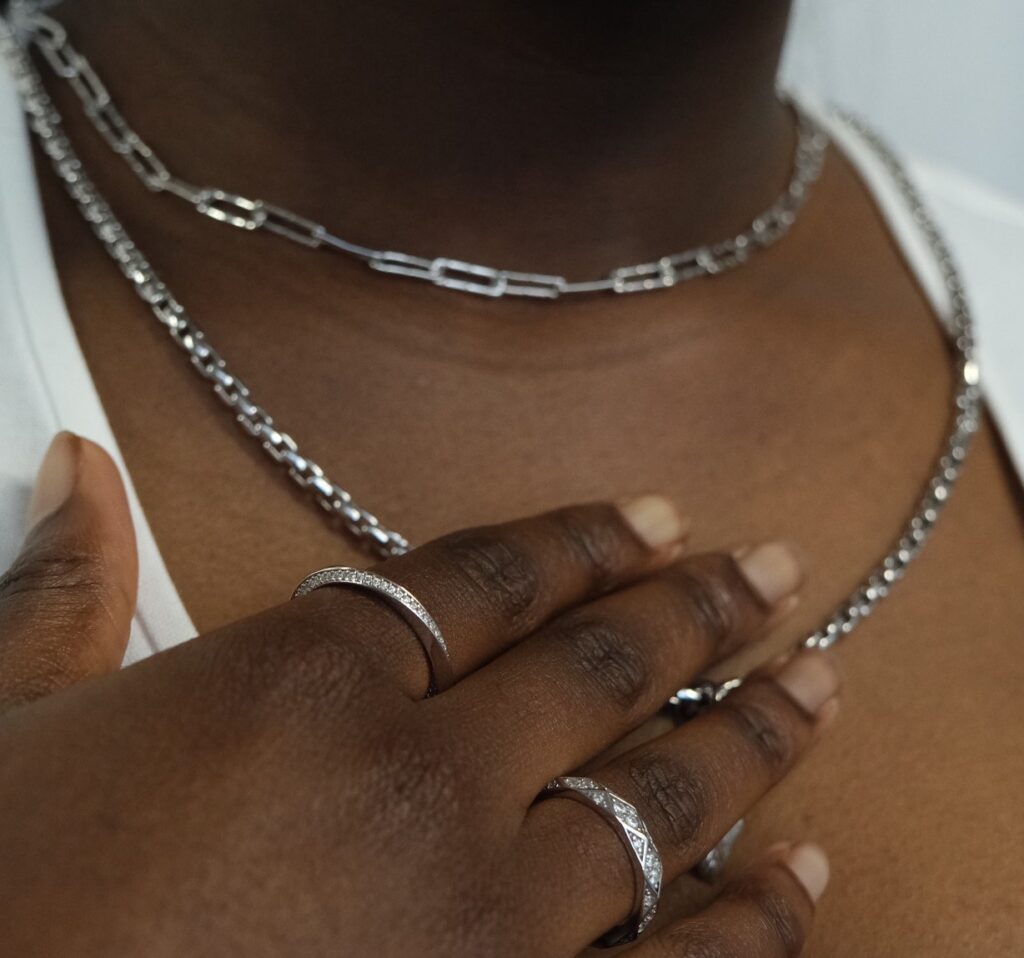Diamonds
DIAMOND AUTHENTICITY
A diamond cut is a key factor to consider when choosing your next piece of diamond jewelry.
By Chinwe, Chief Creative Officer
Diamonds are one of the most precious and valuable gemstones on earth, and it’s no surprise that many people want to know if the diamond they own or are considering buying is real or not. There are several easy ways to tell if a diamond is real, but it’s important to note that these methods can only provide a preliminary indication of a diamond’s authenticity. For a more accurate assessment, it’s best to have the diamond examined by a professional gemologist.
At ODOZIAKUCHI all our diamonds are ethically sourced from leading industry partners to ensure the authenticity of our diamonds.
-
Constellation Ring – 18K White Gold 4.65ct
18K White Gold
£8,652 Select options This product has multiple variants. The options may be chosen on the product page -
Eternity Merged Ring 18K White Gold- 0.20ct
18K White Gold
£1,625 Select options This product has multiple variants. The options may be chosen on the product page -
Serene Ring – 18K White Gold 0.20ct
18K White Gold
£3,188 Select options This product has multiple variants. The options may be chosen on the product page
The Fog Test
One of the easiest ways to tell if a diamond is real is to perform the fog test. Simply hold the diamond up to your mouth and breathe on it. If the diamond stays foggy for a few seconds, it’s likely a fake diamond. Real diamonds disperse heat quickly and won’t fog up.
-
Eternity Band Ring – 18K Gold 1.04ct
18K Gold
£2,063 Select options This product has multiple variants. The options may be chosen on the product page -
Eternity Twirl Round Cut Ring 18K Gold- 0.36ct
18K Gold
£1,285 Select options This product has multiple variants. The options may be chosen on the product page -
Flower Stud Diamond Earrings – 18K Rose Gold – 1.7ct
18K Rose Gold
£4,326 Add to cart
The Scratch Test
Real diamonds are one of the hardest substances on earth and can only be scratched by another diamond. If you have a piece of glass, you can use it to perform the scratch test. Simply scratch the glass with the diamond. If the diamond leaves a scratch, it’s likely a real diamond. However, it’s important to note that this test can damage the diamond, and should only be performed on loose diamonds.
The Transparency Test
Another easy way to tell if a diamond is real is to perform the transparency test. Place the diamond on a piece of newspaper or printed text. If you can read the text through the diamond, it’s likely a fake diamond. Real diamonds have a high refractive index and will bend light, making it difficult to see through them. However, it’s important to note that some fake diamonds, such as moissanite, can also pass this test.
The Water Test
Another easy way to tell if a diamond is real is to perform the water test. Fill a glass with water and drop the diamond into the water. If the diamond sinks to the bottom, it’s likely real. If the diamond floats or stays suspended in the water, it’s likely a fake diamond. However, it’s important to note that some fake diamonds, such as cubic zirconia, can also sink in water.
The UV Light Test
One more easy way to tell if a diamond is real is to perform the UV light test. Shine a UV light on the diamond. If the diamond glows in a bright blue color, it’s likely real. If the diamond doesn’t glow or glows in a different color, it’s likely a fake diamond. However, it’s important to note that some fake diamonds, such as high-quality cubic zirconia, can also pass this test.
In conclusion, while these easy tests can provide a preliminary indication of a diamond’s authenticity, it’s important to note that they are not foolproof. For a more accurate assessment, it’s best to have the diamond examined by a professional gemologist who can perform more sophisticated tests and identify any treatments or enhancements the diamond may have undergone. When buying a diamond, always make sure to purchase from a reputable seller and ask for certification from a recognized gemological institute such as GIA, AGS, or EGL.




